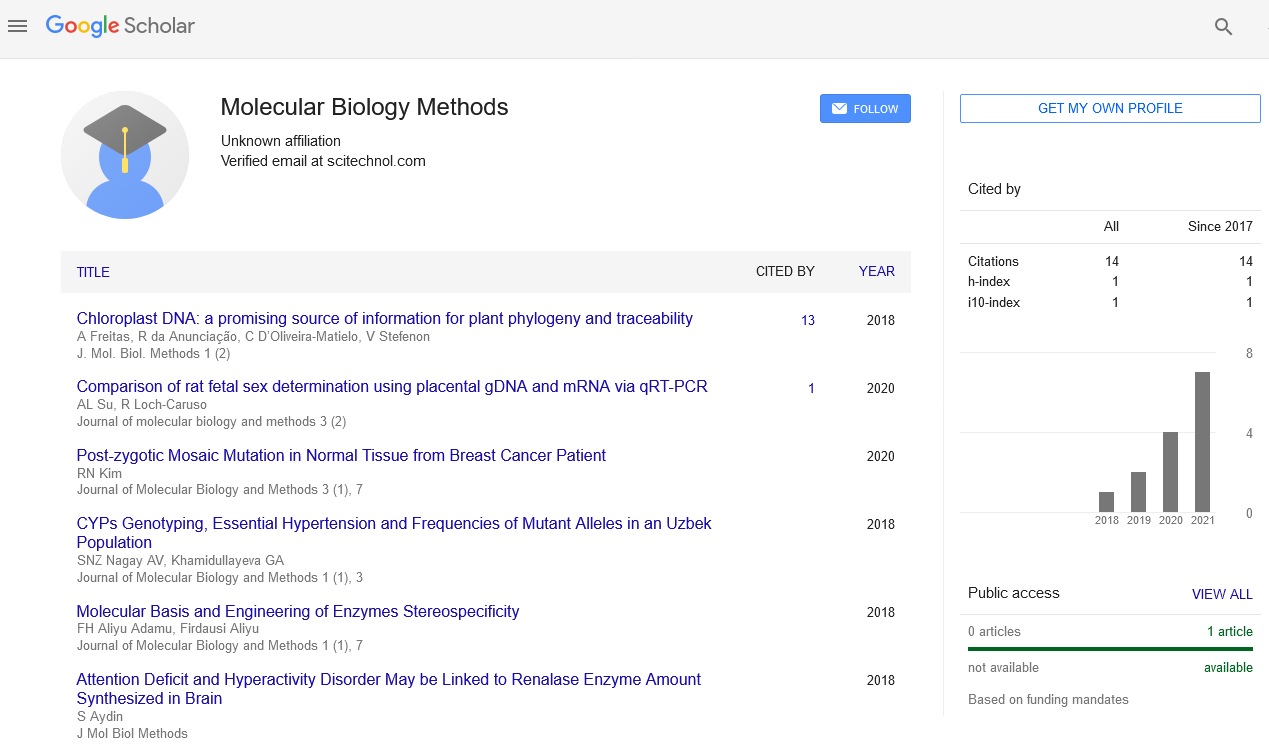Commentary, J Mol Biol Methods Vol: 7 Issue: 2
Cell Synthesis: Understanding the Fundamental Process of Life
Kellen Barbara*
1Department of Biology, Princeton University, Princeton, United States of America
*Corresponding Author: Kellen Barbara,
Department of Biology, Princeton University,
Princeton, United States of America
E-mail: barbara@kellen.edu
Received date: 28 May, 2024, Manuscript No. JMBM-24-140271;
Editor assigned date: 31 May, 2024, PreQC No. JMBM-24-140271 (PQ);
Reviewed date: 14 June, 2024, QC No. JMBM-24-140271;
Revised date: 21 June, 2024, Manuscript No. JMBM-24-140271 (R);
Published date: 28 June, 2024, DOI: 10.4172/JMBM.1000158
Citation: Barbara K (2024) Cell Synthesis: Understanding the Fundamental Process of Life. J Mol Biol Methods 7:2.
Description
Cell synthesis, also known as cellular synthesis or cellular biosynthesis, is a fundamental biological process that underpins all life forms on Earth. It encompasses the intricate mechanisms by which cells build, maintain, and regulate their structures and functions. From the synthesis of proteins to the replication of DNA, cell synthesis governs the growth, reproduction, and adaptation of organisms.
Understanding cellular synthesis
At its core, cellular synthesis involves the creation and assembly of molecules necessary for the survival and reproduction of cells. This process is highly regulated and orchestrated by genetic information encoded in DNA. Key aspects of cellular synthesis include:
DNA replication: Before a cell divides, it must replicate its entire genome accurately to pass on genetic information to its progeny. DNA replication involves unwinding the double helix structure of DNA, synthesizing two new complementary strands using nucleotides, and ensuring error correction mechanisms maintain fidelity.
Transcription: The first step in gene expression is transcription, where a segment of DNA is copied into RNA by RNA polymerase. This RNA, known as messenger RNA (mRNA), carries the genetic code from the nucleus to the ribosomes in the cytoplasm.
Translation: At the ribosomes, mRNA is translated into proteins through a process involving transfer RNA (tRNA) molecules and ribosomal RNA (rRNA). This process is crucial as proteins are essential for the structure, function, and regulation of cells.
Protein synthesis: Proteins are the workhorses of the cell, performing various functions such as catalyzing biochemical reactions, providing structural support, transporting molecules, and regulating gene expression. Protein synthesis involves the assembly of amino acids into polypeptide chains according to the mRNA template.
Molecular machinery involved in cell synthesis
Cell synthesis requires a coordinated effort of molecular machinery within cells:
Ribosomes: These organelles facilitate protein synthesis by reading mRNA and catalyzing the assembly of amino acids into polypeptide chains.
Enzymes: Various enzymes participate in DNA replication, transcription, and translation, ensuring the accuracy and efficiency of these processes.
RNA polymerase: Essential for transcription, RNA polymerase binds to DNA and synthesizes RNA molecules that carry genetic information for protein synthesis.
Chaperones: These proteins assist in the folding and assembly of other proteins, ensuring they attain their functional conformations.
Regulation of cell synthesis
Cell synthesis is tightly regulated to maintain cellular homeostasis and respond to internal and external cues:
Gene regulation: Cells control which genes are transcribed into mRNA through mechanisms such as transcription factors and epigenetic modifications.
Feedback mechanisms: Proteins often regulate their own synthesis through feedback loops, where their levels influence the activity of genes involved in their production.
Cell signaling: External signals from the environment or neighboring cells can trigger signaling pathways that influence gene expression and protein synthesis.
Cell synthesis is the cornerstone of life, governing how cells build, maintain, and adapt to their environments. From the replication of DNA to the synthesis of complex proteins, this intricate process ensures the survival and function of organisms across all kingdoms of life. By unraveling the mechanisms and regulation of cell synthesis, scientists continue to uncover new insights into health, disease, and the potential applications of biological systems. As research progresses, the profound implications of cell synthesis are likely to revolutionize fields ranging from medicine to biotechnology, paving the way for innovative solutions to longstanding challenges in human health and beyond.
 Spanish
Spanish  Chinese
Chinese  Russian
Russian  German
German  French
French  Japanese
Japanese  Portuguese
Portuguese  Hindi
Hindi 